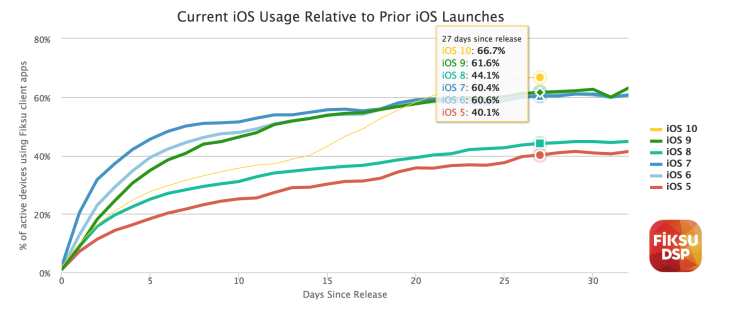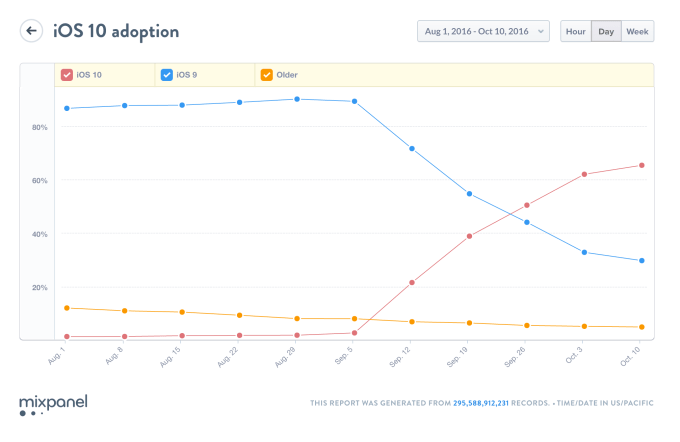

Apple’s newest mobile operating system, iOS 10, has seen faster adoption than any other OS version, according to data released by mobile marketing firm Fiksu. Currently, iOS 10 is installed on 66.7 percent of active devices, roughly a month after its launch. That means the majority of iOS device users are now running the latest OS – which is something of a surprise, given that early adoption was slower than usual.
This data was first spotted by the blog 9to5Mac, which also noted that Mixpanel is showing a similar trend in terms of adoption rates. Mixpanel reports iOS 10 adoption is 65.38 percent, as of Monday.
What’s interesting is that iOS 10 adoption was moving fairly slowly during the first two weeks of its launch – slower than iOS 6 through iOS 9, in fact. It then quickly jumped up toward the end of September. This is an unusual pattern in terms of new mobile OS upgrades among Apple’s user base – typically, adoption doesn’t spike quite so sharply. Adoption increased 20 percent from September 27 through October 4, the post notes.
It’s unclear why that’s the case, but it could be related to when Apple timed its push of “update alerts” to users – that is, Apple typically sends notifications shortly after the new OS debuts to encourage users to upgrade their software from the Settings. This time around, that alert could have been delayed, which is why we’re seeing the upgrade delay followed by a big spike.
For comparison’s sake, it took iOS 9 only a week to be installed on 50% of devices, but took over a month to reach the majority of iOS users. It then took two and a half months for iOS 9 to reach 70 percent of devices, according to data from Apple. That adoption rate was higher than the year before’s however, for iOS 8, and on par with iOS 7’s rate.
“We’ve never seen this kind of acceleration in the adoption curve for an iOS upgrade,” said Tom Cummings, CP New Market Strategy, Fiksu DSP. “After a lackluster first two weeks, a combination of increased emphasis by Apple and improved user confidence in iOS 10 is pushing adoption rates to new heights. It is likely that users were hesitant to update to iOS 10 during the initial weeks as news of bugs and malfunctions surfaced,” he added.
Cummings suggests that, in addition to early issues having been fixed, the growing popularity of app integration with iMessage and other iOS 10 features could have also contributed to the spike.


